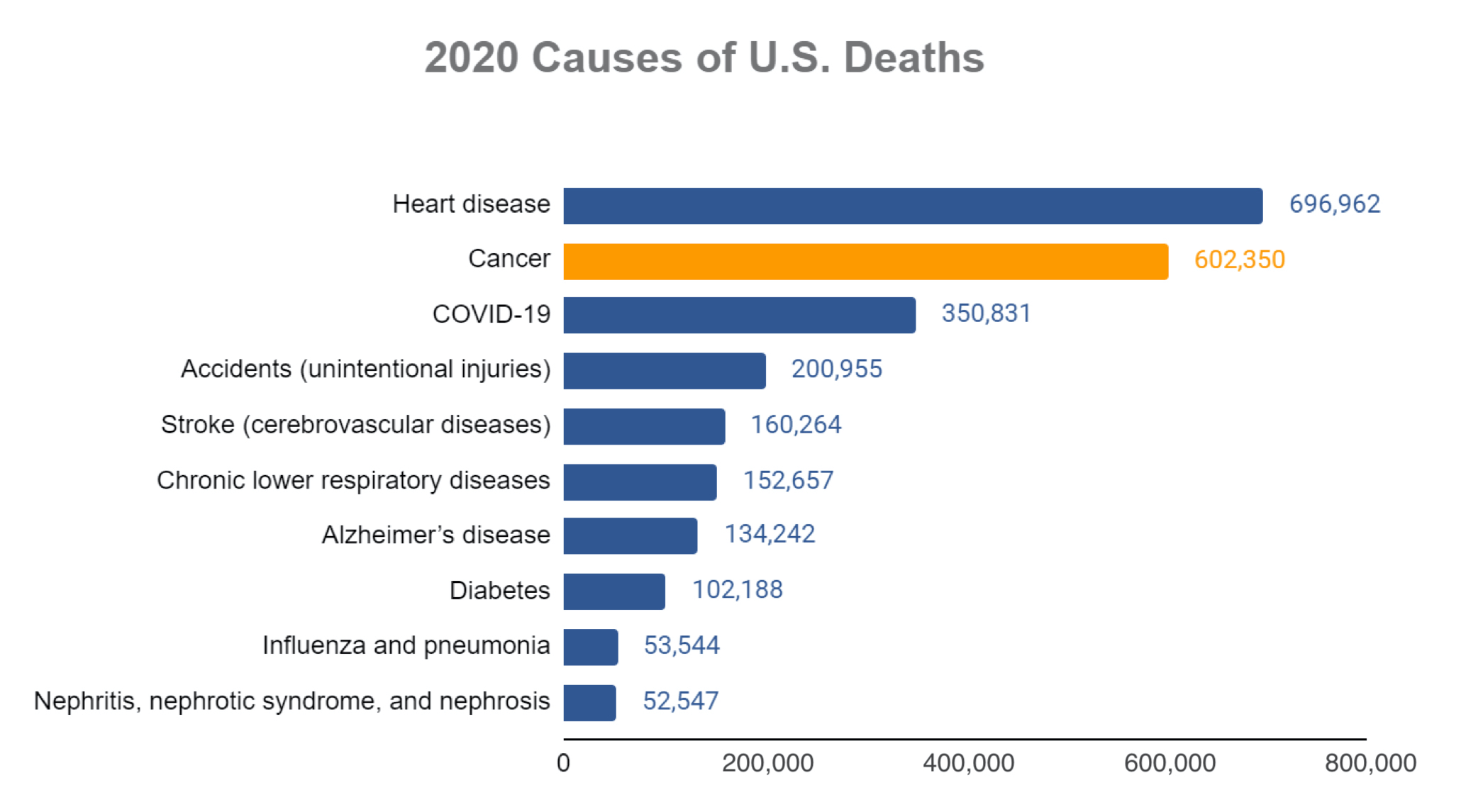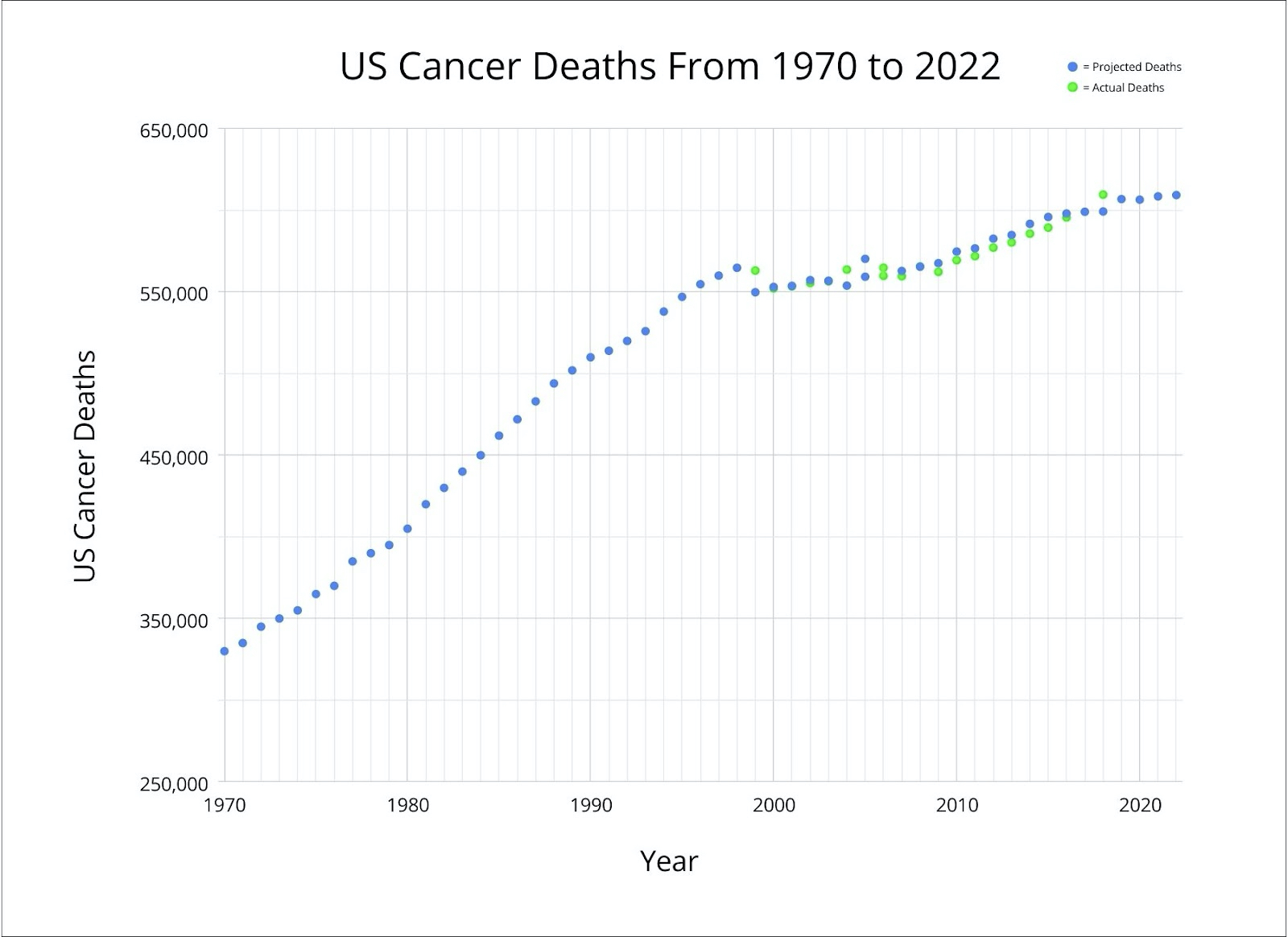Strategic plan to substantially reduce cancer deaths - discussion #1
Cancer is the #2 cause of death in the U.S.
This is our first essay to discuss details of our strategic plan to substantially reduce cancer deaths; see Strategic plan to substantially reduce cancer deaths.
Currently, cancer is the #2 cause of death in the United States, after heart disease, causing about 600,000 deaths per year:
Reference: CDC: Leading Causes of Death
Data is incomplete for 2021, but for the period of March 2020 to October 2021, the top 5 causes were the same; see Leading Causes of Death in the US During the COVID-19 Pandemic, March 2020 to October 2021.
This graph, compiled by my staff, shows that the total number of cancer deaths has plateaued, which is actually a great accomplishment:
We would expect cancer deaths to increase for two reasons. First, the U.S. population has increased from 205,052,000 in 1970 to an estimated 332,403,650 in 2022 - a 62% increase. Second, we know that cancer is a disease of aging, with a median (50th percentile) age of 66 years (NIH: Age and Cancer Risk), so cancer deaths should increase as the population ages. The U.S. life expectancy at birth has increased from 70.9 years in 1970 (CDC: Vital Statistics of the United States, 1970; Vol. 2, No. 5), to 76.1 years in 2021 (CDC: Life Expectancy in the U.S. Dropped for the Second Year in a Row in 2021). Thus, based on an increasing population and longer lifespan, we would expect cancer deaths to increase, assuming no changes in incidence or treatment.
To counteract the effects of population growth and changes in life expectancy, we can measure age adjusted cancer death rates. In 1970, the age adjusted (standardized) U.S. cancer death rate was 198.8 per 100,000 people (Jemal 2005), peaking in 1991 at 215 deaths per 100,000 people (mainly due to smoking) and then declining in 2019 to 146 deaths per 100,000 people (American Cancer Society: Cancer Facts & Figures 2022). This drop in the age adjusted U.S. cancer death rate from 215 to 146 deaths per 100,000 people is substantial. It is equivalent to 3.5 million fewer cancer deaths and is attributed to reductions in smoking, advances in early detection and better treatment for some cancers. This reduction in cancer deaths is largely due to fewer deaths for the most common cancer types: lung, colorectal, breast and prostate.
Our next essay will discuss our long term goal of reducing cancer deaths to 100,000 per year.

